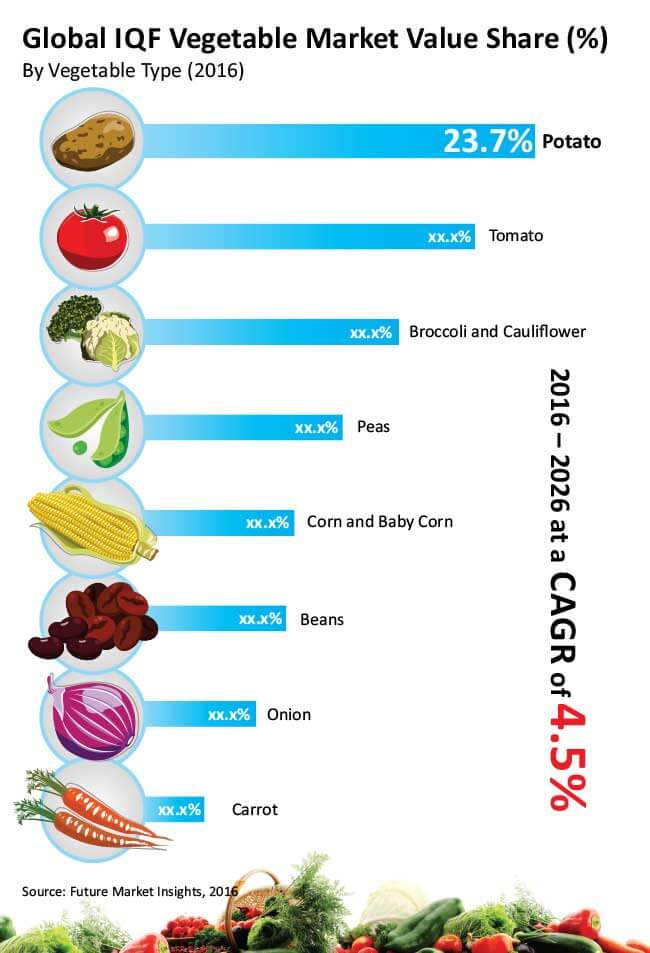The inherent advantage of the IQF process makes it ideal for preserving vegetables and fruits
The Individual Quick Freezing (IQF) technology involves vegetables being frozen as individual pieces, which is unlike other freezing processes. Due to this, increased convenience is offered to consumers and thus value of the product gets enhanced. The IQF process of freezing vegetables is far superior to the conventional process. The USP of this technique is that small ice crystals form within the product that help maintain the fresh quality of the product even after the shelf life of the same is extended. Most foods can be preserved for a longer period of time if they employ the IQF process and are kept at a low temperature till they are used. In the conventional way of slow, natural freezing, the food gets destroyed due to the low temperature drawing all the water from the small cells of the food, adversely affecting its colour and flavour. In contrast, in IQF method of freezing, the breakage of the cell walls of the food items is prevented as the freezing process is quick. Hence, due to the use of IQF method of freezing, most of the flavour, colour and the firmness of vegetables or fruits is retained.
In terms of value, the global IQF vegetable market was valued at nearly US$ 1,300 Mn in 2016, and is expected to reach more than US$ 2,000 Mn by the end of the forecast period in 2026. In terms of value, the market is expected to register a CAGR of 4.5% during the forecast period. In terms of volume, the global IQF vegetable market is projected to register a CAGR of 4.2% during the forecast period.
Increasing cases of bacteria in IQF vegetables is restraining the growth of the market
Bacterial contamination in frozen fruits and vegetables is the main issue that is being faced by Japan and North American countries. Listeria monocytogenes bacteria has generated a lot of adverse publicity for frozen foods and IQF vegetables have been recalled from the market for the same reason. Due to the high pollution levels in countries such as U.S. and China, that are two of the three major producers of IQF vegetables, manufacturers are facing the problem of bacterial contamination of IQF frozen foods. In 2016, due to an outbreak of Listeria monocytogenes in the U.S., most of the manufacturers had to recall IQF vegetable products. To counter this negative perception of IQF vegetables, most of the American companies are taking proactive measures. Even then, a sense of dread is ingrained in consumers because of the negative perception created owing to the contaminated food items and this is restraining the growth of the global IQF vegetable market.
Request Report Sample@ http://www.futuremarketinsights.com/reports/sample/rep-gb-3378
Production of IQF vegetables in developing countries is expected to decrease their cost
IQF vegetables are produced predominantly in developed countries. However, even though the production volume of IQF vegetables is high in developed countries, the price of IQF vegetables remains high there due to the processing cost. This happens due to the high labour cost in the developed world, coupled with high raw vegetable prices and high cost of electricity. But, with the start of the production of IQF vegetables in developing countries – which in turn are major producers of vegetables – costs can be reduced as the labour cost in developing countries is comparatively low and electricity is cheap as well. This is especially true for countries like India and China, and this strategy can help reduce the price of the finished IQF vegetables and thereby increase the market size of IQF vegetables. To underscore this point, companies like Capricorn Food Products India Ltd. is trying to increase their output of IQF vegetables from their facilities located in India.
Global IQF Vegetable Market Attractiveness Analysis by Vegetable Type
IQF Peas segment is expected to register the highest CAGR in terms of both value and volume over the forecast period
IQF peas segment is anticipated to register the highest CAGR during the forecast period. Increasing demand for convenience food coupled with an increasing vegan population is set to boost the demand for IQF peas in the North America and Western Europe regions. The IQF Potato segment accounted for a value share of more than 20% in the year 2016. However, despite a strong show at the beginning of the forecast period, this segment is expected to lose significant market share by the end of the forecast period due to increasing cases of presence of bacteria in IQF potatoes, which forced the FDA to come up with stringent regulations. The IQF Broccoli and Cauliflower segment is anticipated to register a CAGR of 5.1% in terms of value during the forecast period.
Send An Enquiry@ http://www.futuremarketinsights.com/askus/rep-gb-3378

“The use of IQF vegetables in the fast food industry is an upcoming trend
Due to the inherent advantages of the IQF process, fast food restaurants have started using IQF vegetables instead of frozen or fresh vegetables and this maintains the nutrition and quality of the vegetables along with a longer shelf life. Thus, the use of IQF vegetables in the fast food industry is gaining huge traction. For example, fast food companies like Domino’s Pizza Inc. and Pizza Hut Inc. are using IQF vegetables for preparing pizza and other food items instead of using frozen vegetables. These two companies have launched various pilot projects in a number of countries such as U.S., Canada, U.K. and France and have completed the successful transition from frozen to IQF without compromising on taste and quality of their products.”
— Analyst – Food & Beverages, Future Market Insights
Browse Full Report@ http://www.futuremarketinsights.com/reports/iqf-vegetable-market
